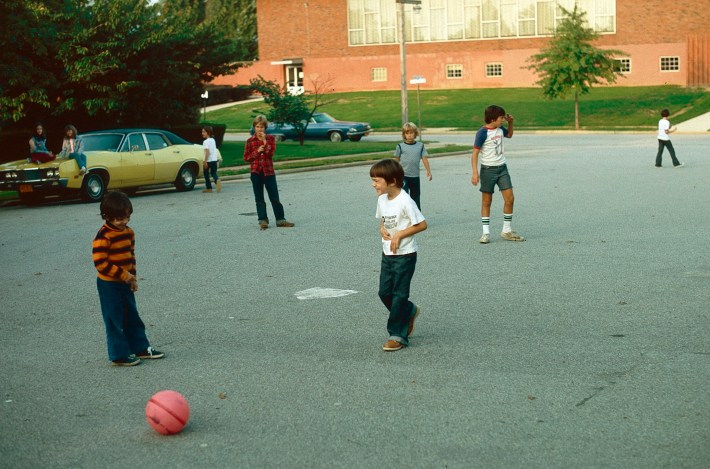I grew up on Long Island, five miles from Levittown -- the first mass-produced, suburban development in the country. When I was a small child, in the 1970s, we played in the street. A car came occasionally. It would stop and wait while we picked up our ball and stepped aside. Then the driver would wave and smile and trundle past.

Over time, there were more cars. There was more speed. We heard stories about kids getting hit. We were told to play in yards and only cross at corners and “look both ways.” As roads were widened and expanded, I'd hear screeching brakes and smashing glass and metal more regularly.
But I still looked forward to the day I'd gain the freedom that comes with a driver's license. In 1987, just months after I started driving, I was behind the wheel and waiting to make a left turn. It was a beautiful spring day. I saw two boys, maybe 10 years old, ride their bikes across the intersection. I saw a Cadillac convertible coming from the opposite direction.
The driver slammed into one of the kids.
He shot clear across the intersection, his body traveling in an arch, and flopped onto the asphalt just to the left of my car. The bike landed in two pieces.
I put my car in park, got out, and ran to a nearby bank. I shouted to the tellers to call an ambulance. Then I ran back to the boy. He was missing teeth. His face was puffed and contorted, awash in blood and tears. He begged for God. Pleaded for his mother. An ambulance came. The boy lost consciousness as they took him away, leaving dark blood stains and bits of bicycle on the pavement.
The Cadillac driver remained at the scene. He had the green light. I don't think he was breaking the speed limit. But why was the road so wide? Why was it possible and legal to go fast enough through a residential area to kill?
Americans worry about drugs, crime, terrorism. But the biggest threat to our kids is the far more mundane MVA, as hospitals abbreviate “Motor Vehicle Accident.” The thing is, it's not an accident. Our morally bereft transportation policies are slaughtering our own children. Fixing our streets should be our top priority and yet it barely registers in national discourse.
I've loved the Bay Area since I first visited in 1985. I've worked here in radio and TV. I have family here. My brother's one of those computer guys in the expensive car that half the city admires and the rest hates. All New Yorkers have a soft spot for the City by the Bay. It's a fresh and exciting place of innovation. It also has severe problems; housing and homelessness, chief among them. But like my hometown of New York and my adopted home, for the last 15 years, of Los Angeles, it also has a terrible problem with its streets.
The Bay Area is replete with tightly knit, walkable, bikeable neighborhoods. But we stroll like nervous cats, always on the alert for a speeding car that can kill or severely injure us whenever we step off the curb, as Walk SF reminded us with its World Day of Remembrance for Road Traffic Victims.
We know how to solve this problem. I've been to the Netherlands and experienced safe streets first hand. We must have protected bike lanes and intersections, bike boulevards, better sidewalks, inviting green spaces, and fast, reliable transit. That doesn't mean banning cars, but we have to keep people safe.
That's what StreetsblogSF is all about. We have some great leaders in the Bay Area who need our support. And we have some backwards-looking autotopian dinosaurs who need to be reminded that human life is more important than "levels of service."
Above all, Streetsblog should be like a big call to action every day. Be vocal. Come speak at hearings. Write to our politicians. Run for office yourself. Because it is a moral imperative that we fix our streets so children can again walk, bike, or play without getting killed.
I'm excited about taking this on and working for safe streets with SF advocates. It's an incredibly important challenge, and to pull it off Streetsblog SF needs the support of readers like you.
Streetsblog SF depends on reader contributions to function. Unlike big oil and big auto, there is no trillion dollar industry to back safe streets advocacy. What we do have is many dedicated people who recognize that our streets need to change. About a quarter of Streetsblog SF's budget comes from donations no larger than $1,000. That makes all the difference in the world.
If you've given before, I hope you'll continue to support this important work. And if you haven't, now is a great time to start.




